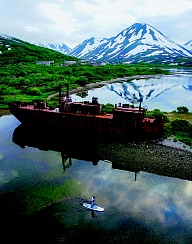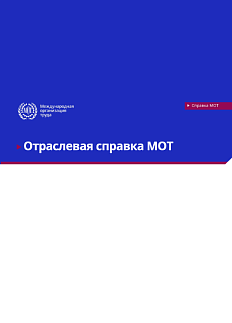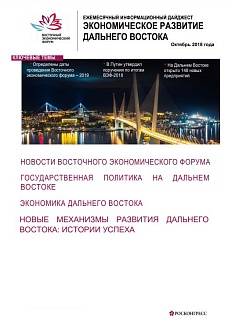According to Ernst & Young (EY), from 2014 to 2017, the flow of domestic and inbound tourism heading to the Russian Far East increased by 71.5%. In 2018, the number of tourists reached a record 6.9 million people. The programme to develop tourism in Russia for the period up to 2025, in their optimistic projection, hopes to increase the flow of tourists to the Russian Far East by up to 20%.
Apart from the traditional types of tourism, this forecast includes the relatively unusual sort. Recently, extreme recreation and tourism have been undergoing active development in the Russian Far East. An increasing number of Russian tourists are coming to the Far East to engage in extreme sports. We took a look at the top three most promising types of tourism popular with extreme tourists around the world.
Running leap from a helicopter
For heli-skiers worldwide, Kamchatka is already on the map
Heli-skiing, a relatively international type of extreme recreation, has only recently appeared in the Kamchatka. It operates very differently from what the sport looks like in Sochi or the Alps. The organizers say that Kamchatka is the only place where people can ride through the crater of an active volcano. Helipro was one of the first companies to create a mountain sports base there, known as the Snow Valley Mountain Lodge. Several local tour companies have also organized tours.

«It is too early to call heli-skiing a flagship for the tourism industry in Kamchatka, but demand is growing steadily. For example, this season we saw twice as many tourists as we did last season. Approximately 60 to 70% of them are from Moscow; Germans are the most frequent international tourists they are very skilled at snow sports. They see this as an additional challenge: there are not many places where you have the chance to freeride down the slope of a volcano. We hire the services of a private helicopter company to get people to the top of the slopes. There are some problems, but they are solvable, especially since regional leaders want to improve infrastructure and attract guests to the region. The main issue lies in the kind of day-to-day conditions tourists face. But we are successfully tackling this issue as well: this year we have seen the launch of glamping (glamourous camping Ed.) at Anyuysky National Park in Khabarovsk Territory,» says Founder and General Director of RussiaDiscovery Vadim Mamontov.
Heli-skiing, both the sport and the business, started in Canada. The most famous company offering this type of active recreation is Canadian Mountain Holidays, who has an annual sales turnover of over CAD 1.5 million. Canadian companies serve as an example of what is needed to be successful in this market. Ted Mortons research Canadian Heli-ski Industry identifies several key success factors: location (good and stable snow cover for freeriding paired with easy access via transport and closeness to international airports), good service, smart advertising campaigns, and the availability of one-day tours. Moreover, heli-ski sessions are regulated by several federal and regional laws at once, some of which concern necessary instructor training and helicopter flights. The study notes that Canada boasts approximately 20 operators in the heli-ski industry and there is no room for other companies to enter the market.

Keeping in mind that there are not as many locations for good heli-skiing as there are consumers actively involved in this sport and recreation, the Russian Far East has the opportunity to increase its attractiveness to foreign extreme sport tourists, especially since Kamchatka is already on the heli-ski map all that is left is improving the service, which is what Russiatourism and Roza Khutor are planning to do.
«In addition to adventure and extreme tourism, there is also demand for expeditions to Chukotka and Wrangel Island, tours to the Sakhalin and Kuril Islands, and whale-watching trips to the Shantar Islands. And let us not forget cruise tourism, since similarly positioned Alaska sees a tourist flow of approximately a million people annually, which is a thousand times more than we see in the Far East,» said Vadim Mamontov.
Riding icy waves
Surfing is a form of active recreation that has even caught the attention of Elon Musk, who released a limited collection of 200 Tesla branded carbon fibre surfboards for USD 1.5 thousand each. They sold out in under a day.

Russia is a latecomer to surfing. It is said that surfing was introduced to Russia by the famous US surfer Tom Curren in 2003. That was when he travelled to Kamchatka to make a film about surfing. Vladivostok is considered the Russian surfer magnet city. In the 2000s, the city saw its first professional athletes. Vladivostok hosted the first Russian surfing championship in 2010.

Kamchatka and Halaktyr Beach are considered the lodestone of Arctic surfing
Time has passed, and Khalaktyrsky Beach in Kamchatka has now made its way onto a surfing magazines rating of places youd never think to go surfing. This several-kilometre-long beach is a half hours drive from Petropavlovsk-Kamchatskiy; it boasts three main surfing spots, located relatively close to each other: Halo, Central (aka Old Place), and Curren (named after the very same Tom Curren). Winter, water temperatures of +2°C, air temperatures of 15°C, wetsuits, and boards thats how Britains The Guardian reports on the crazy (in reality: not only) Russians, who ride the waves in Siberia (in reality: the Far East is not Siberia). The above statements are from the article titled Surf in Siberia, which was practically the first to break the news globally about the new surfing mecca in Kamchatka.
Kamchatka is an attractive destination for cold-water surfers, competing with the coasts of Norway, Iceland, and the Lofoten Islands. Russia is home to just six surfing hotspots, two of which are located in the Far East: Kamchatka and Vladivostok. The other four are Sochi, Anapa, Kaliningrad, and St. Petersburg.
In Vladivostok, surfers catch waves at the citys Patrokl beach (Sobol Bay), the sandy Shamora Beach on Lazurnaya Bay, and on Russky Island, which also boasts board rentals and a tent camp. Surfers also make their way to Nakhodka. But the mecca of Arctic surfing is Khalaktyrsky Beach in Kamchatka, where the commercial international competition Nixon Surf Challenge was held in 2014.
One of the first surfing schools in the Far East Snowave Surf School posits Kamchatka as the place with the most well- studied spots and stable waves in Russia. Surf tourism is increasing in popularity every year. The peak season is, as a rule, July through August/September.


Primorye Cousteaus
Another prospective direction for the development of active tourism businesses in the Russian Far East is diving. Primorye is a unique destination for this type of extreme recreation. The cold Sakhalin and warm Korean currents meet off the coast, so subtropical flora and fauna mingle with Arctic marine life. For example, one of the main attractions is a meeting with a Giant Pacific octopus. They reach around a meter in length and weigh 20 kilograms, but there are giants that are human-sized and weigh over 40 kilograms.

Theres also wreck diving, where the divers explore wrecked ships. The Japanese destroyer Hibiki and the transport ship Indigirka are located not too far from shore.
Ultimately, almost any point on the Primorye coast is good for diving, from Khasan to Rudnaya Pristan. Far Eastern Marine Reserve in Khasan District is a divers mecca in the Japanese Sea, but special permits are necessary to visit this location.

Primorye currently has a fair number of dive clubs that adhere to PADI and NAUI standards; there is even a Russian National Dive League. Dive tourists most often visit during the gentle autumn months (the Velvet Season of August September). One of the main issues is the regions lack of ships equipped for diving and most importantly a lack of captains, capable of taking those ships out to sea.
This is a fairly promising area of development for small businesses, since tours are not the only source of revenue. There are also equipment sales and rentals and diving lessons (with certification in accordance with international standards).







